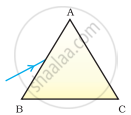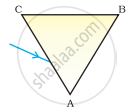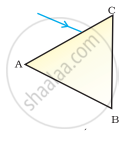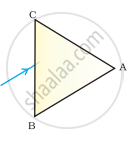Advertisements
Advertisements
प्रश्न
A prism ABC (with BC as base) is placed in different orientations. A narrow beam of white light is incident on the prism as shown in Figure . In which of the following cases, after dispersion, the third colour from the top corresponds to the colour of the sky?
 |
 |
 |
 |
| (i) | (ii) | (iii) | (iv) |
पर्याय
(i)
(ii)
(iii)
(iv)
उत्तर
(ii)
Explanation -
If Prism is kept with base BC at the bottom, then the emerged band of colour would show violet at the bottom.
If Prism is kept with base BC at the top, then violet would be at the top, followed by indigo and blue.
APPEARS IN
संबंधित प्रश्न
Draw a neat and labelled diagram of the structure of the human eye.
How does the eye change in order to focus on near or distant objects?
(a) The lens moves in or out
(b) The retina moves in or out
(c) The lens becomes thicker or thinner
(d) The pupil gets larger or smaller
Out of animals of prey and predators, which have their eyes:
at the front of their head?
Fill in the following blank with suitable word:
Having two eyes gives a ................field of view.
Name two animals having eyes:
one the sides of the head.
Name the following:
The area where the image is formed but not seen by our eye is termed as.
Mention, if the following statement is True or False
Rods are responsible for vision in the dark
Complete the following sentence with appropriate Word
The photoreceptor cells of the retina sensitive to colour are:
With neat, labeled diagram describe the structure of retina of eye.
Match the following:
| Column - I | Column - II | ||
| 1 | Retina | a | pathway of light |
| 2 | Pupil | b |
far point comes closer |
| 3 | Ciliary muscles | c |
near point moves away |
| 4 | Myopia | d | screen of the eye |
| 5 | Hypermetropia | e | power of accommodation |
